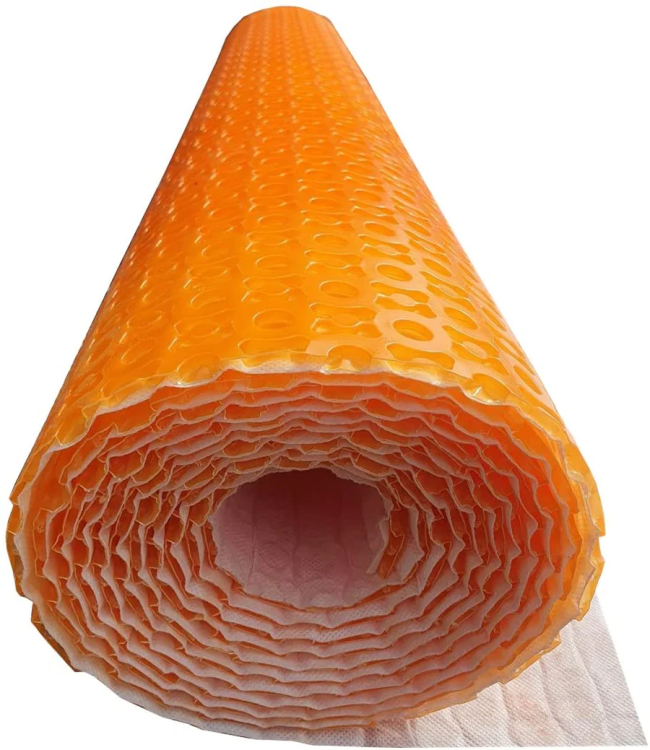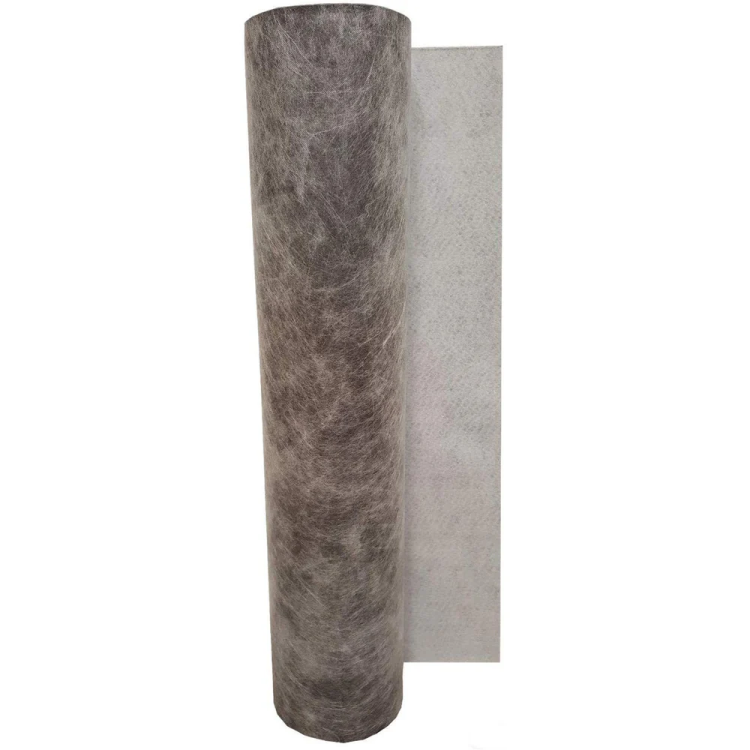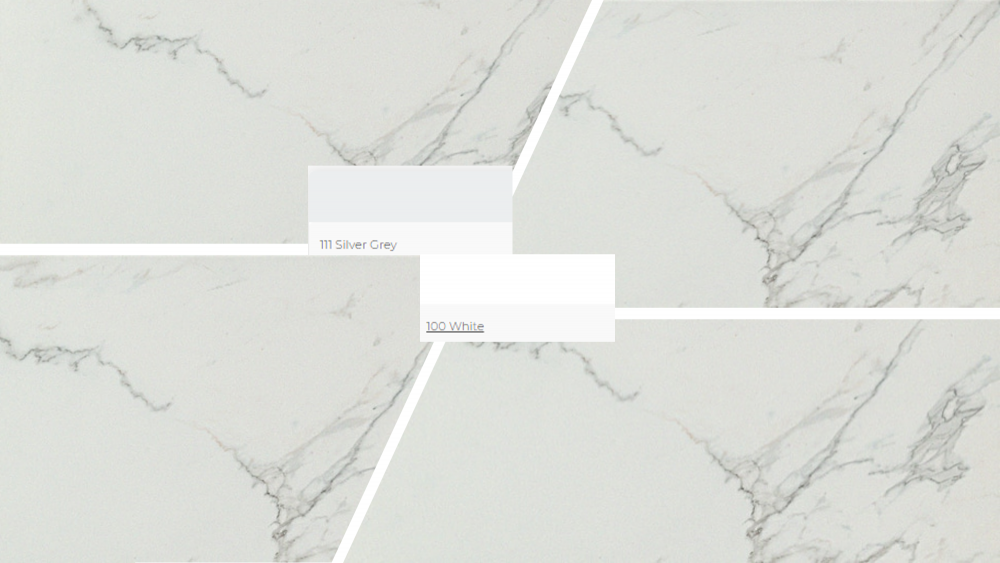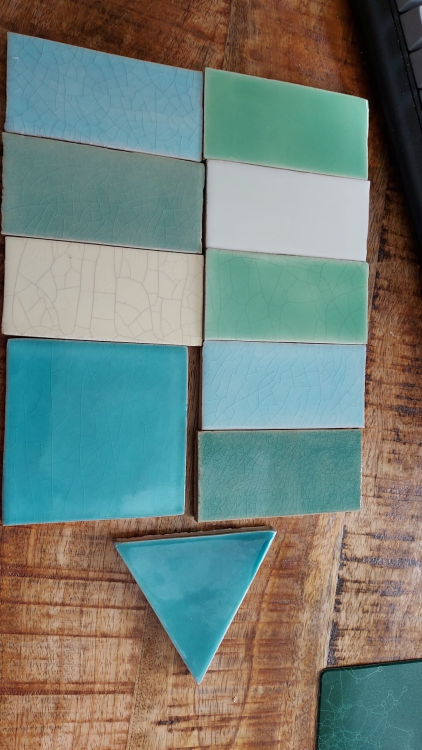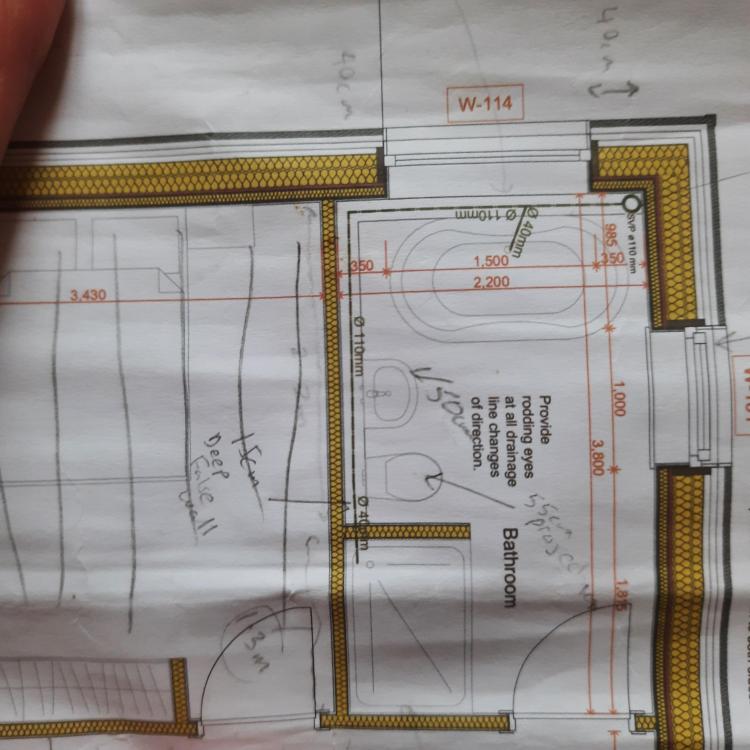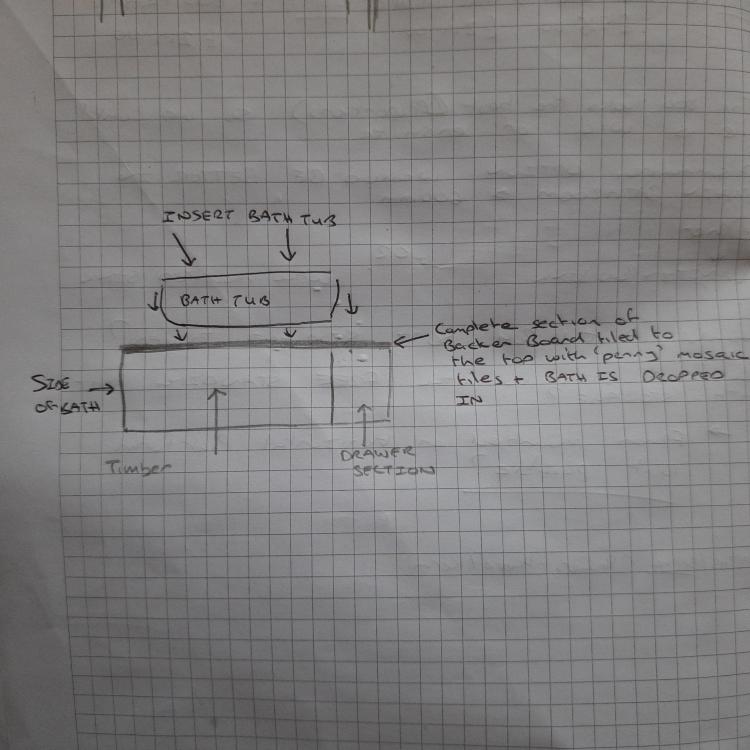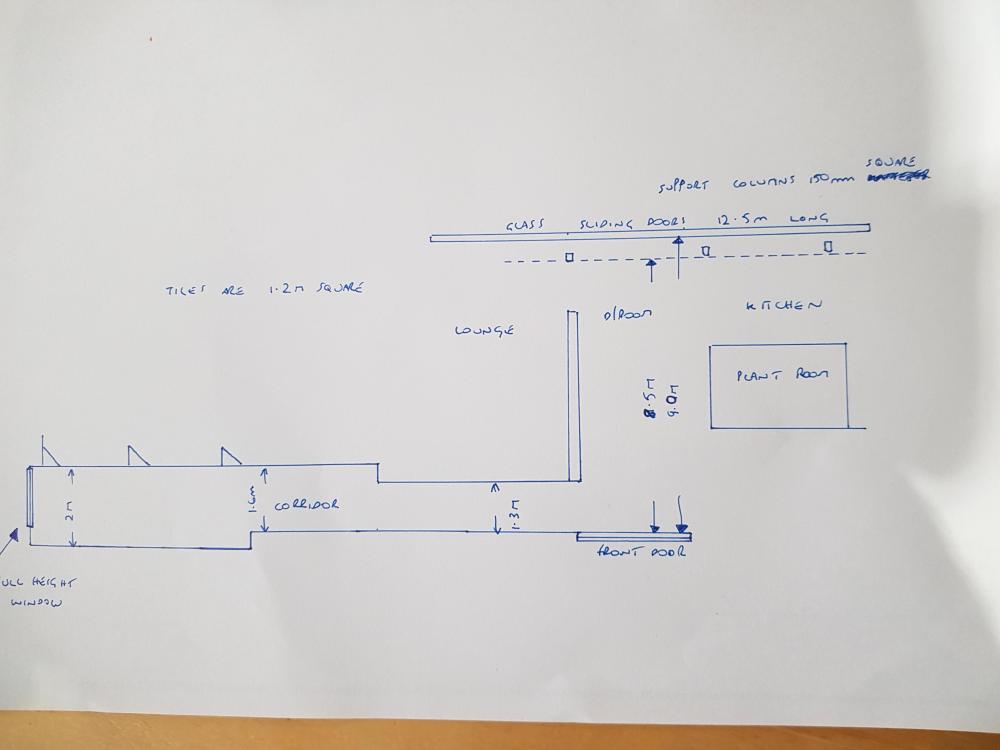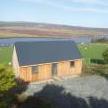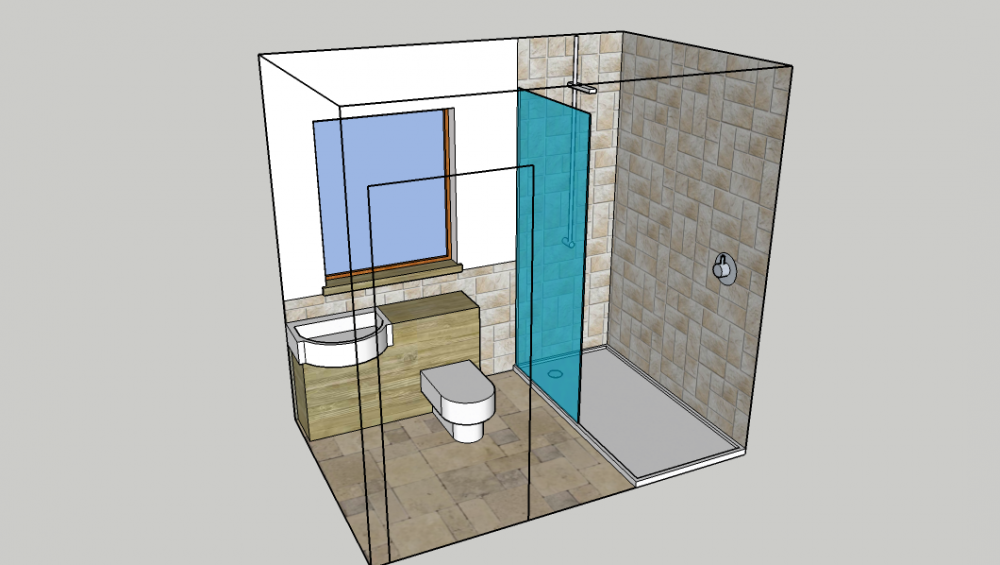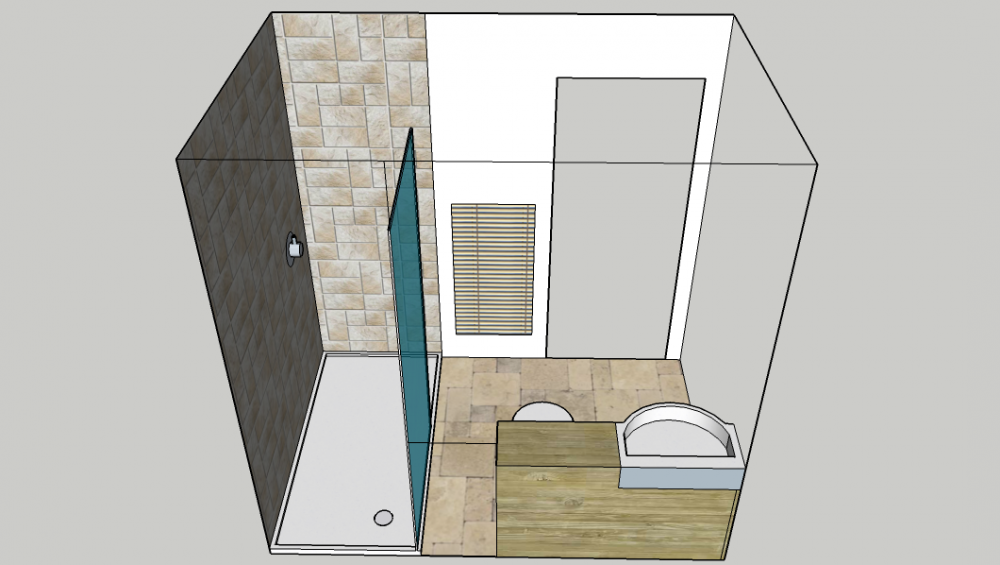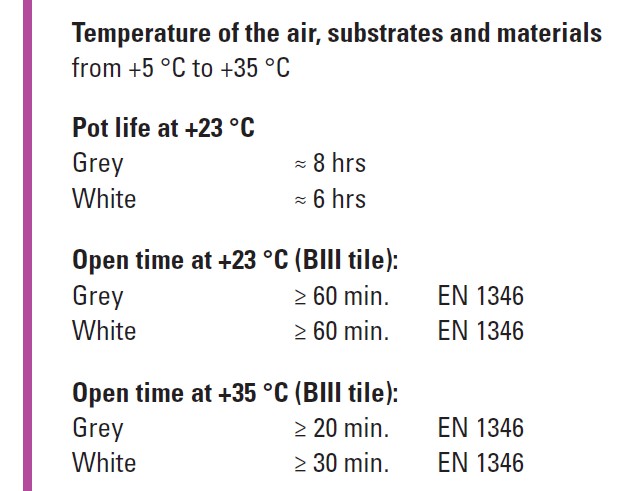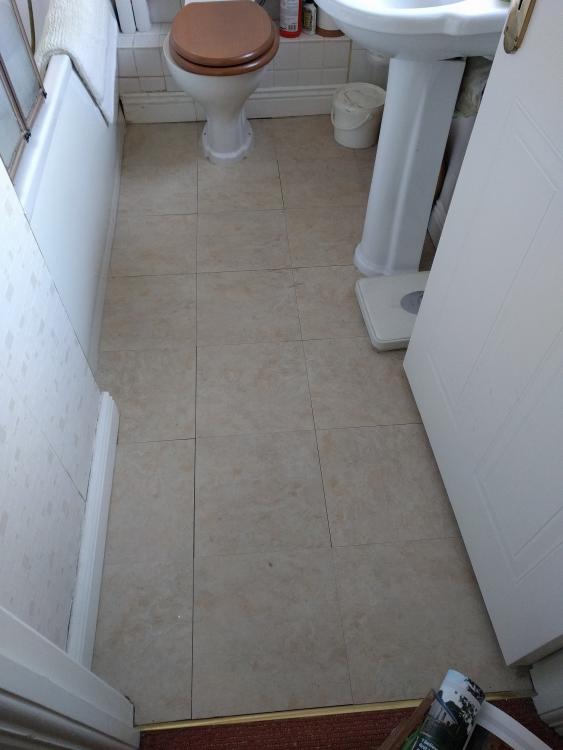Search the Community
Showing results for tags 'tiling'.
-
I'm looking to tile over an old concrete slab. It's not in bad condition but has a few cracks so I would like to lay an anti-crack membrane prior to tiling. Brand names aside I seem to have two choices. Waffle type https://nassboards.co.uk/products/orange-decoupling-membrane Or fleece type https://nassboards.co.uk/products/decoupling-anti-crack-membrane-waterproof-matting They are similar in price so wondering if one has an advantage over the other?
- 1 reply
-
- decoupling membrane
- fleece
-
(and 1 more)
Tagged with:
-
Need urgent help as am at breaking point. Bathroom is tiled in Calacatta Lappato Extra by Minoli. Which Mapei UltracolourPlus colour grout would the distinguished experts here use? Am torn between plain white and silver grey. Cannot get swatches / samples of grout at the moment. Thank you
-
I'm minded to tile the floor in a bathroom and a toilet with Portuguese terracotta tiles, in an aperiodic tiling (like Penrose's, but using squares and equilateral triangles; see https://tilings.math.uni-bielefeld.de/substitution/square-triangle/). Before I go further: is there a reason why I should *not* do this? The tiles are not cheap (ca. 200 eur/m^2), so this would be an expensive mistake. (Well, perhaps not compared to other expensive mistakes: the total area to be tiled is between 8 and 9m^2.) https://newterracotta.com/tiles/ PS. I am looking for reasons such as "it won't last" or "you will slip and break your neck", not "I hate maths". Here are some samples. (I also got others, but these seem to be colours that fit together. I should choose two or three.)
-
Looking for some advice.... 22mm P5 floor in timber frame. Laid by a chippy who must have left his level at home that day so the floor has a wee hump in it. I took as much off with a sander as I dared but still a bit there. I had laid ditra matting and eufh cables and I was going to compensate for the floor using more/less adhesive under the tiles. Her in doors called around today and suggested self levelling compound - seems sensible - as long as I can get it to flow and settle level then it would make tiling easier plus it would protect the eufh cables as I put the adhesive down. Good / bad idea? If its a good one - what would be a good recommended product to use to self level the floor? Cheers.
- 11 replies
-
- tiling
- self levelling
-
(and 1 more)
Tagged with:
-
Hi, So I can’t find any solid information on this topic. For context, I am wanting tiles floor with underfloor heating from the kitchen into the living/dining room (joining rooms via a door) so basically the whole downstairs. While having a new kitchen installed prior to tiling I was advised to lay some insulation backer boards directly onto the existing floor boards by using flexible tile adhesive and screws with washers. I am now at a stage where I can continue laying the insulation boards through to the living room ready to then continue the process of, electric UFH mats, a self levelling screed and then tiles. My issue is, after laying the boards in the kitchen directly onto the floor boards, the living room has plywood sheets down to which I now am thinking would of been better to lay the insulation boards on to as oppose to directly to floorboards. So what’s the correct way from now? Do I lift the ply in the living room and carry on with the adhesive and boards, or have I messed up already in the kitchen and need to track back. Any help would be greatly appreciated, thanks!
-
- tiles
- underfloor heating
-
(and 3 more)
Tagged with:
-
How do I tile around a inset/drop-in bath
Donegalsd posted a topic in Bathrooms, Ensuites & Wetrooms
Hi, I would like to fit an oval bath probably this one, https://www.megabad.com/hersteller-koralle-badewannen-serie-t200-ovalbadewanne-a-100501.htm Into a frame in my master bathroom. I am thinking of using a timber panel on the side of the bath and hopefully I can get a joiner to make a storage drawer to pull out at the foot of the bath. The timber bath panel and the drawer face may be fluted so the drawer is 'hidden'.Pic and diagram attached. But how do I deal with the top of the frame. I was thinking, if I support the tub from below, I can cut a hole in backer board, drop the tub in, tape the backer board to the bottom of the bath rim and then tile with mosaic tiles all around the rim of the bath - over the top of the tape. Does this make any sense and will it be watertight? I won't be doing any of this myself but I want to find if the proposal is feasible. Thanks -
I have cemfloor floor screed with ufh, it doesn't appear to give off much dust. We are hoping to move in shortly with lots of uncovered floor and I don't want extra dust. What can I seal the floor with that won't be detrimental to future tiling or wooden flooring being laid? I have been told to avoid the traditional PVA as it will crack and peel off with ufh, not sure if this is true. Thanks in advance, can't actually believe I have just typed the words "move in shortly"
-
Hi guys/gals, I’m a newbie on here so hope I’ve put this in a relevant place. Next March/April the loft conversion and rear extension are kicking off on my 2 bed end of terrace bungalow. Me and my brother will be doing about 70% of the work, I’m and Electrician and also can do plumbing, getting in a friend to do the roof and rear dormer (as it’s a truss roof). so getting to the point, me and my brother will be removing all of the existing tiles and bringing down all trusses and existing joists. Tell me if this sounds hopeful, but I was looking at getting a 20M x 15M tarpaulin and covering the entire roof, and just putting in a temporary ridge to let the water slope off. This will have eyelet holes and be fixed to external walls. Firstly, would you recommend rear and front scaffolding at eaves height to remove the tiles/roof (if so, any idea on costs)? Or could we just have a movable tower hired? secondly, I need to talk to my chippy friend about this really, but would we need scaffolding for the new timbers being installed? I was thinking that the ceiling joists would be installed from wall plate to wall plate and then that would give us a floor to stand on for installing the rest above? Once all in I can put down the breathable membrane to make it water tight. thankyou in advance for any advice. Here is a picture of the plans just to give you an idea.
- 1 reply
-
- loft
- conversion
-
(and 3 more)
Tagged with:
-
Tile size 1.2m x 1.2m. Bit of a dilemma with the tiling. Hope there is enough info in the drawing but if not I will soon find out!. How to decide on the tile layout is a bit of pain to be honest. Not sure whether to centre, grout line from the full height window at the end of the corridor or centre it near the section of corridor near the front door? The other bit that is niggling me is whether to overlook this area completely and just tile it how it ends up if I want to have a neater looking tile near the glass doors. If I centre it on the corridor I will end up with a horrible small section of tile between the support columns( small squares next to dotted line) and the glass doors OR I lay tile that will allow me to put a whole tile with cutout upto the column and then a narrow tile with cutout from the glass doors to the column ( distance from glass doors to column approx 200mm) and thus avoiding small section of tile approx 150mm x 200mm. If I choose to have a neat tile cut by the columns i will have a grout line that is not centred at any point down the corridor but seen as it is staggered in width will it matter (to me with severe OCD all things self- build). Hope this makes sense. TIA
-
I previously posted about using a wet room former in our ensuite but have since remembered that my 22mm egger is well and truly glued down to the joists and removal will be a stretch too far. In light of this I'm planning a 1600x800/900mm tray and hope the floor levels with tiling etc result in a fairly flush finish into the tray. Room is 1700mm x 3600mm and 100mm will be boxed out at one end to contain shower valve etc much like @Crofter design. I've read various threads about what to use under tiles and just want to check I've not missed anything before ordering materials in... Floor build up: 22mm P5 glued and screwed on 400mm cc posi joist. 6mm ply (and under tray?) glued and screwed at 150mm cc's Electric UFH mat (eBay) covered with self levelling (latex?) Tiles Walls: Shower area will be water resistant PB or cement board (brand?) ? both to be tanked fully as per @Nickfromwales excellent thread. Then fully tiled. Rest of walls to be water resistant PB and skim finish. In theory a fully tanked shower area will be fine with the water resistant PB but many seem to use cement board so I need to make a decision here. I can see the logic in cement board but if it's getting wet something else has gone wrong?! Have I missed anything important? Many thanks
- 9 replies
-
- ensuite
- shower tray
-
(and 5 more)
Tagged with:
-
I'm on the final stretch now with this little house. The last room to need significant decisions made is the en suite so I figured I would stick all my questions in the same place on this thread. The room is 1600x2400 and has a basin/wc unit (already in place, although the install is temporary for now). The shower will run along one full wall and have a fixed glass screen and full length tray. Flooring is just going to be vinyl, and I'm planning on a part tiled, part paint finish on the walls. An electric heated towel rail will fit on the wall beside the door- a tight space but I can get a 500mm wide one in, just. So.. first question. When looking at the tray and screen, is it best to get these as a package? If sourced separately, am I running the risk of incompatibility where the screen seals to the tray?
- 118 replies
-
- shower enclosure
- shower tray
-
(and 1 more)
Tagged with:
-
Evening all, Our slab was poured about 2 years ago now & with tiling down stairs now looking imminent I have been advised to heat shock the slab pre tiling (UFH). Starting off by increasing the temp by 1 - 2 degrees a day up to a max and then hold that temp for a week and then drop in back down by 1 - 2 degrees a day. The only snag is that no one seems to be able to tell me what the max temp should be, today I put it up to 23degrees - I can't see us every running it warmer than that. Does anyone know how high we need to take it to? Thanks
- 4 replies
-
- floor slabs
- ufh
-
(and 1 more)
Tagged with:
-
General advice is not to turn UFH on for 2-4 weeks after laying tiles. I have used Kerakoll BioGel NO LIMITS Eco Friendly Flexible S1 Adhesive (White). The data sheet for this includes details for using it at 35°C and our UFH flow temperature is set at 37°C (in 50mm of screed). I'm getting pressure to get the heating back on.... given these temperatures do you think this is risky?
-
Well it is nothing drastically stunning like some of the tiling jobs i have seen on here. but i DO have 2 bathrooms to do in our self build ...not so big about 2x3M each Its ONLY the floor ...as I will get a REAL tradesman to do the little ones on the wall. But i need to get these done to fit the sanitary ware etc and i thought i would "have a go" So.... the floors are 22mm Structural Ply ..solid as a rock they are .... but just in case (and lookig at Youtube advice) I have bought some 6mm Hardbacker and I will screw this down on thinfix to the floor for added stability I had planned to then just use my flexible adhesive to fix the tiles and flexible grout to finish and VOILA..done! but a tradesman (Joiner) said i should really "tank" the floor ...hmmm. I am already adding 6-8mm for the hardback and thinset and then say another 6-7mm for the adhesive and they are a 10mm tile to boot!! ...So I am already into quite a transition from the carpet and thick underlay planned for the landing. what do you think he meant by "tanking" ...I mean I was already thinking of slapping some PVA on the floor before the thinset and hardback ..or would this hurt adhesion I mean i thought tanking was for cellars, wetrooms or swimming pools ..I mean how much water can splash out of a bath when me and the wife get in ? ...not at the same time ....cheeky!
-
Just a query for the resident tilers out there, @Nickfromwales, @nod, @Onoff, trying to decide which way to design my floor tile layout. I will be laying 1200 x 1200 floor tiles and most of the layout is pretty straight forward except for one area. I have tiled quite a few times before and I know the setting out is very important and worth the time it takes to get the right look but I have a long corridor which would look great with the tile joint down the middle and an even sized tile each side approx 800mm. If I go down this route it creates a problem on the other side of the house in the large lounge/kitchen/dining room area. In this area I have three columns that I need to tile around, these are approx 200mm square and would mean having to tile round them with small pieces round the back next to the sliding doors. If I started my tiling in a straight line immediately next to the columns this would mean the cuts would then look right as it would be a tile 350mm x 1200mm with the square for the column cut out of it but would look better in my opinion. If I went down this route it would then throw out the corridor area which would be a tile of approx 400mm against the internal wall and a full tile against the exterior wall if this makes sense. I realise tiling is sometimes about compromise and you cannot always get the desired look in all parts of the area to be tiled but this dilemma is proving one I am not sure which is the best way to proceed.Creamery Floor Plans - Archive.pdf
-
so against my natural tendency to pick up tools and do something I'm sat at home pricing up stuff and ordering - its murder but has to be done. Tiling is my next job - my trusty tiler is booked up to Nov / Dec and I can't wait that long so I will do it; he called around on Tuesday and suggested the following (floor is 22 egger board on 600mm joists): 6mm Hardi backer board stuck down with 'sticks like' & screwed. He said his experience of flexible adhesive and the backer board wasn't good so uses the 'sticks like' now. Has anyone else done this? Should I stick to normal flexi tile adhesive? (no pun intended here) What screws should I use? not great reviews of the hardi screws.... A friend has used Ditra matting (again stuck down with flexi adhesive) - its not massively different in price per m2 - is this a better option? Too many options nowadays .... Any words of wisdom would be good!
-
Evening all, Skimmer booked for upstairs for 2 weeks time and I still have a lot to do before he turns up, gulp. In the bathrooms and ensuites I have used moisture resistant boards http://www.resistant.co.uk/tilebacker-moisture/ and my query is about these. Some will be tiled over (showers and around bath) and some will be skimmed and some walls will be partly tiled (straight onto the board) with the rest skimmed. Should I fill in the gaps between the boards? We are not talking of wide gaps here - at most 3mm (with odd cock ups perhaps closer to 5mm - these are very rare), with most boards butted together fairly tightly. I'd hate to think of any water getting behind these boards through these gaps and then tracking down to the ceilings below. I am happy to tank them - I'd rather a 100% solution - peace of mind is better than worry and since I do it all myself the cost isn't a massive consideration. If the general advice is tank - then what products should I stick to? Thanks in advance.
- 10 replies
-
- moisture resistant board
- skimming
-
(and 1 more)
Tagged with:
-
Hi folks, Tiling a bathroom basics! I'm looking at the 1st floor bathroom floor as my next project. It's currently laid with old vinyl tiles and experienced a flood in the last year so it knobbly and uneven. I've been checking youtube videos and wanted to see how much work I'm letting myself in for and how long the bathroom would be out of action for. It's not a big space - 1.7m x 2.3m in total (including the bath). My main questions are as follows: Will I have to remove the toilet and wash basin? Or can I cut tiles around them? What should I place on top of the timber floor and beneath the tiles - plywood? One big strip or layers? Anything else? Should I just do the floor or go further? The box behind the toilet got wet when the cistern flooded the room....not sure if I want to open that up.... Is it ok to tile up to the existing skirting and finish with silicone? Should I remove or trim the skirting to get tiles underneath? Porcelain, textured tiles I hear are best to provide some grip on a wet surface? Any tile recommendations? Is silicone against the plastic bath siding ok or should I tile that area to? A friend suggested using magnets to create a removeable siding feature there. The Bath does flex however which pushes down on the plastic panel.... I think that's it - this will give me an idea of what I'm taking on or if I need to grow more hair first....!! Thanks.
-
My bathroom floor is built up using 300mm JJI joists at 600 centres, over a 16ft span. 22mm T&G P5 chipboard on top. There is definitely a degree of deflection going on with this buildup. The bathroom itself is at one side of the span, taking up 1.6m, so coming to about a third of the span. Can I just stick tiles directly down onto this using an appropriate flexible adhesive? If not, would a layer of ply provide sufficient additional stiffness? I know that is the default procedure, but tbh I'd be surprised if e.g. an extra 12mm of ply would be able to change the degree of deflection by any measurable amount. Perhaps my intuition is way off on this. The other option is to give up on tiling, and just stick vinyl down, which would be OK, I guess. It would have the advantage of the bathroom floor being lower than the rest of the house, so less chance of water running out.
-
I'll shortly be buying some cement board to use in place of plasterboard behind the woodburner, but it's got me thinking, what's the consensus on using this stuff for its intended purpose? In every house I've lived in tiling has always been done directly onto normal PB, even around baths etc. Not great when the time came to change the tiles, but other than that no problems at all. But I guess the stuff exists for a reason...?
- 9 replies
-
- hardibacker
- aquapanel
-
(and 2 more)
Tagged with:
-
Getting quotes to tile the basement - it's quite a large area, just over 100m2, divided into a hall and four rooms. The slab was hand finished with a boom, not power floated. As such it has a few ridges but is fairly flat. We're using reasonably large tiles, 800mm square and are getting different opinions from different tilers on the best prep. One has suggested grinding down any high spots and using adhesive to make up the levels (but warns that we may be in iffy territory if there is more than 12mm adhesive) wants £10/sqm just for prep. Other has proposed using a self levelling compound which is about £600 in labour and about same again in materials. Thoughts?

